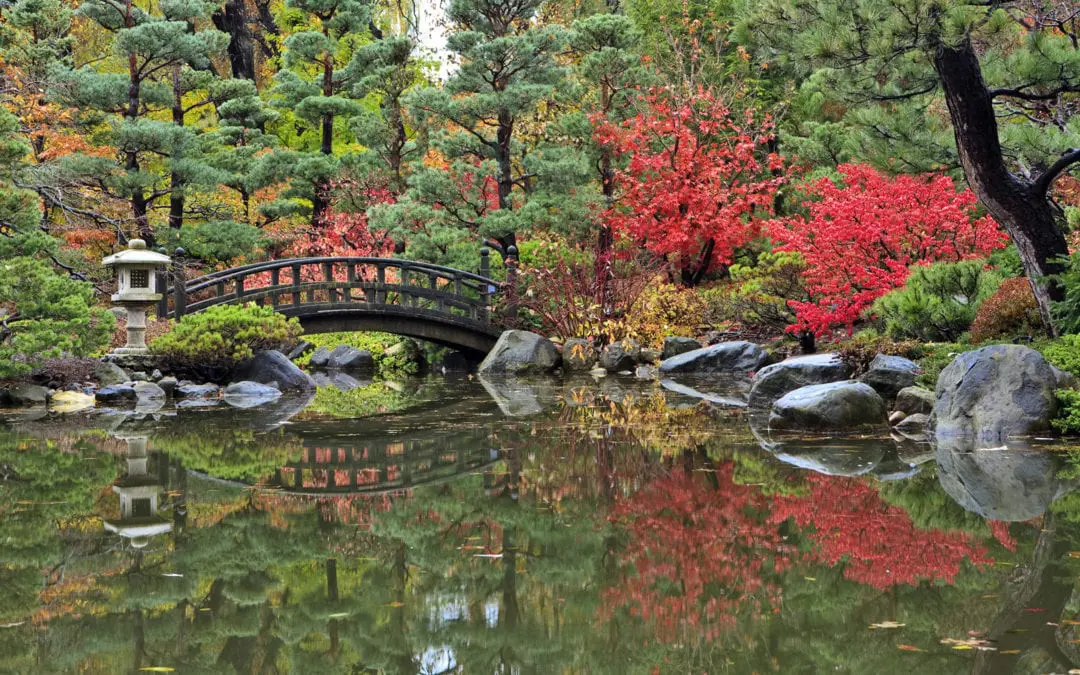I’ve gardened in many languages. And each one, whether an English-inspired knot garden, a parterre of antique roses or the restored northern woodland, taught me some lessons about gardening, and about life in general. My latest teacher is an inherited, what I call, Japan-esque garden.
Japanese gardens combine the basic elements of stone, water and plants to create tranquil spaces that are miniatures of scenery that you might find in nature. Gardens first appeared in Honshu, a large island of central Japan, in the mid-sixth century. Many of the designs are rooted in traditional stories of immortal beings that lived in harmony with nature.
The first impression I had of my new garden was “Wow. What great rocks.” Stone has always played a major role in Japanese culture. Large stones represented Shinto deities called Kami, while the gravel designated sacred ground. The translations have changed in modern gardens. Now large stones stand as mountains or hills. Gravel and sand represent water, especially in dry gardens, which are composed almost entirely of rocks.
Water is an essential element of every Japanese garden. Mine originally had three interconnected ponds. Ponds were meant to evoke lakes or seas. Larger ones often were home to small islands and pavilions. These spaces were used to frame particular vistas of the garden and often served as inspiration for poetry and paintings.
The watchwords when choosing plants are subtlety and harmony. Deciduous trees are chosen for multi-seasonal interest and are carefully placed. Evergreens plants provide stability and interest during the winter months. And the flowers of blooming plants, by their very nature, can represent the impermanence of life and beauty.
This plant element has been the most challenging for me to embrace as the palette can seem limiting. But there is freedom to be found here. Consider the Japanese Maple. Its lacy foliage and seasonal color makes this plant a favorite in landscape designs of all types. My garden came with two mature red-leafed varieties of no particular name and one magnificent ‘Crimson Queen’. My established city neighborhood provides shelter for six new, and less common cultivars.
And there are other choices for small trees. Magnolia, Ornamental Cherry and Serviceberry are often found in Japanese gardens. For flowers, choices include Rhododendrons and Azaleas, Peonies, Iris and Weigela. Of course, evergreens offer endless shades of green. Pine and Spruce in all colors provide structure and bones, while Hemlock and Falsecypress offer interesting form and texture.
There are many beautiful Japanese gardens all over the United States, but our area boasts several very good ones that are within a few hours’ drive. Anderson Gardens in Rockford, Illinois is often rated the best in America, and the Elizabeth Hubert Malott Garden in Chicago is definitely worth the trip. But closest to home is the lovely Japanese Garden at the Rotary Botanical Gardens in Janesville.
So even if you’re not ready to tear out your cottage garden and give away all of your coneflowers and roses, the philosophies that inspired Japanese gardens can be applied to all landscapes. Any of our gardens can express the beauty of the natural world and celebrate the hours of care that we put into them.

